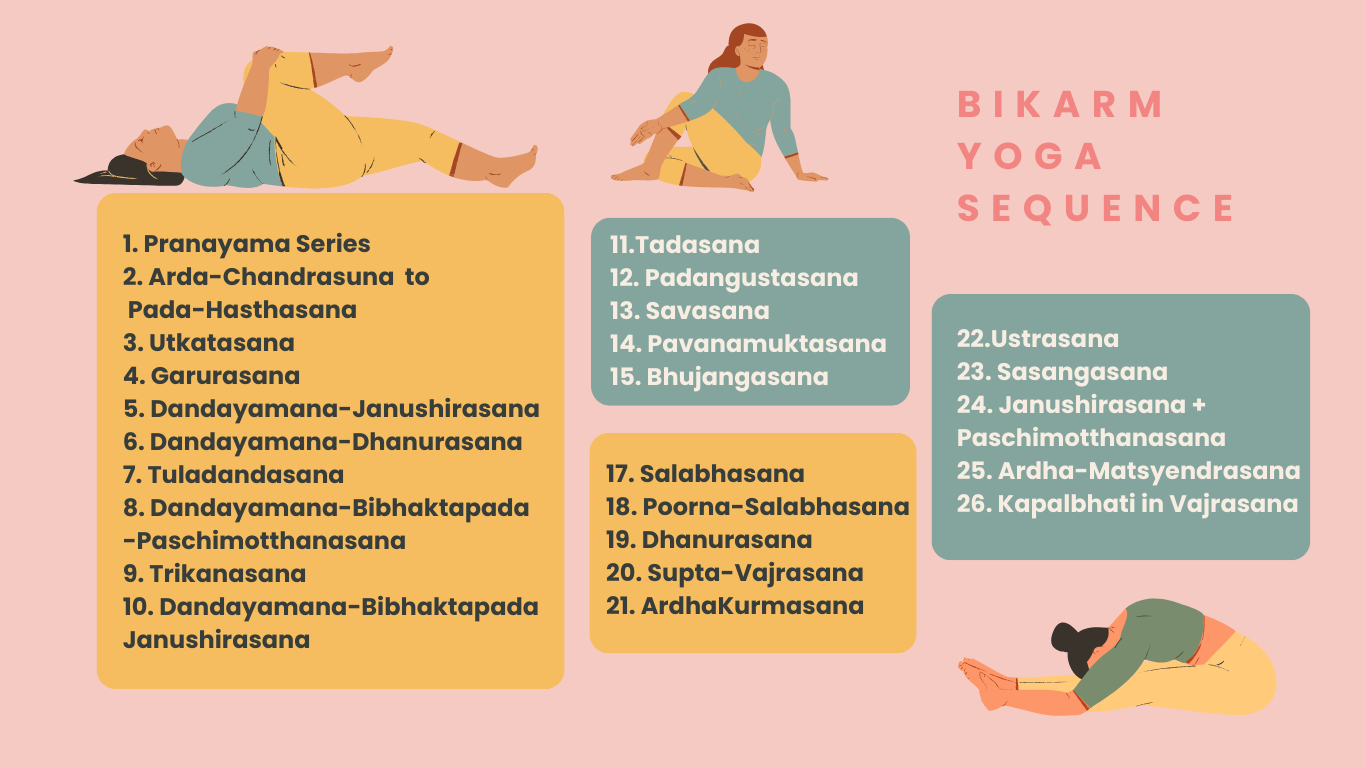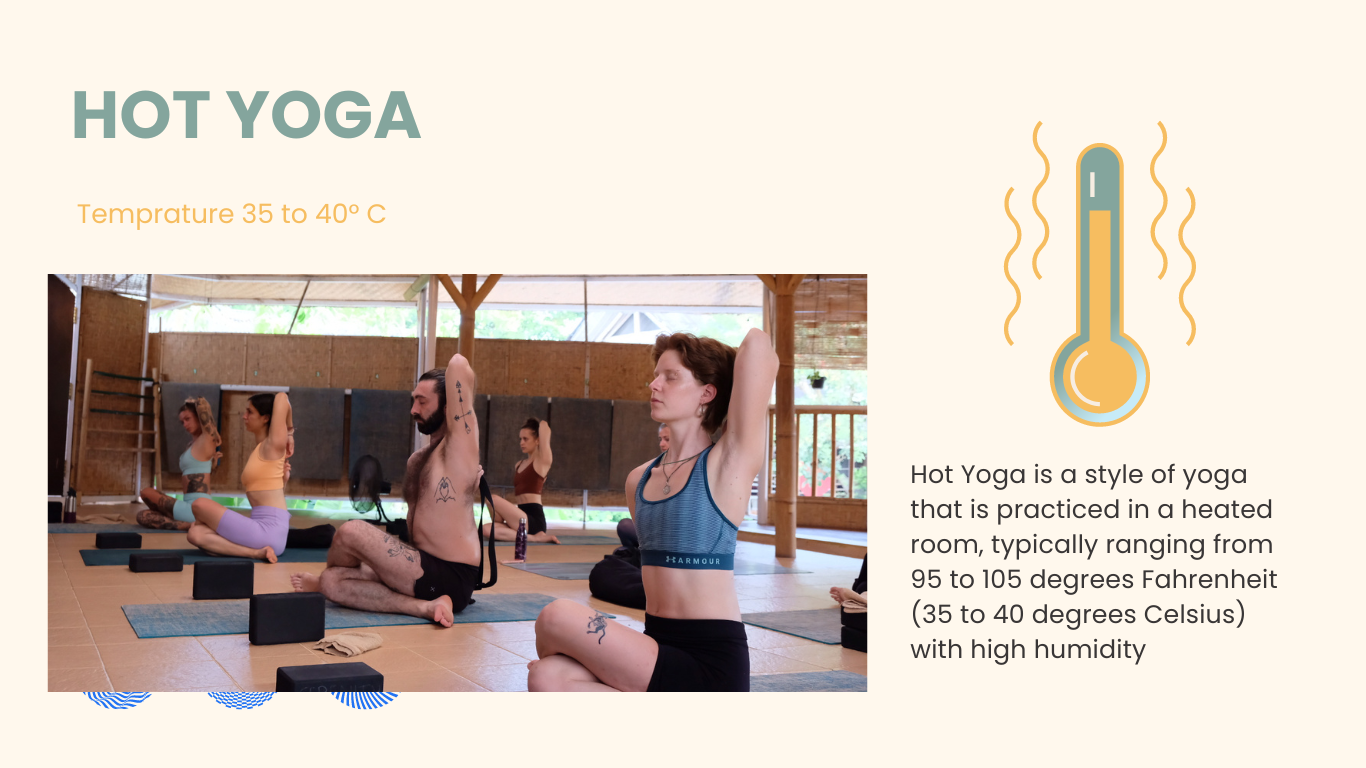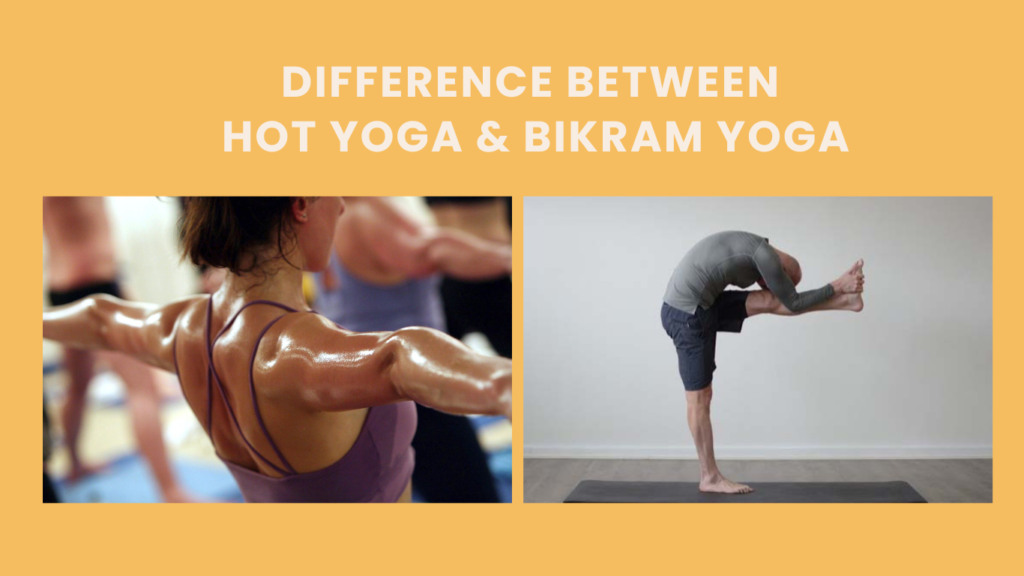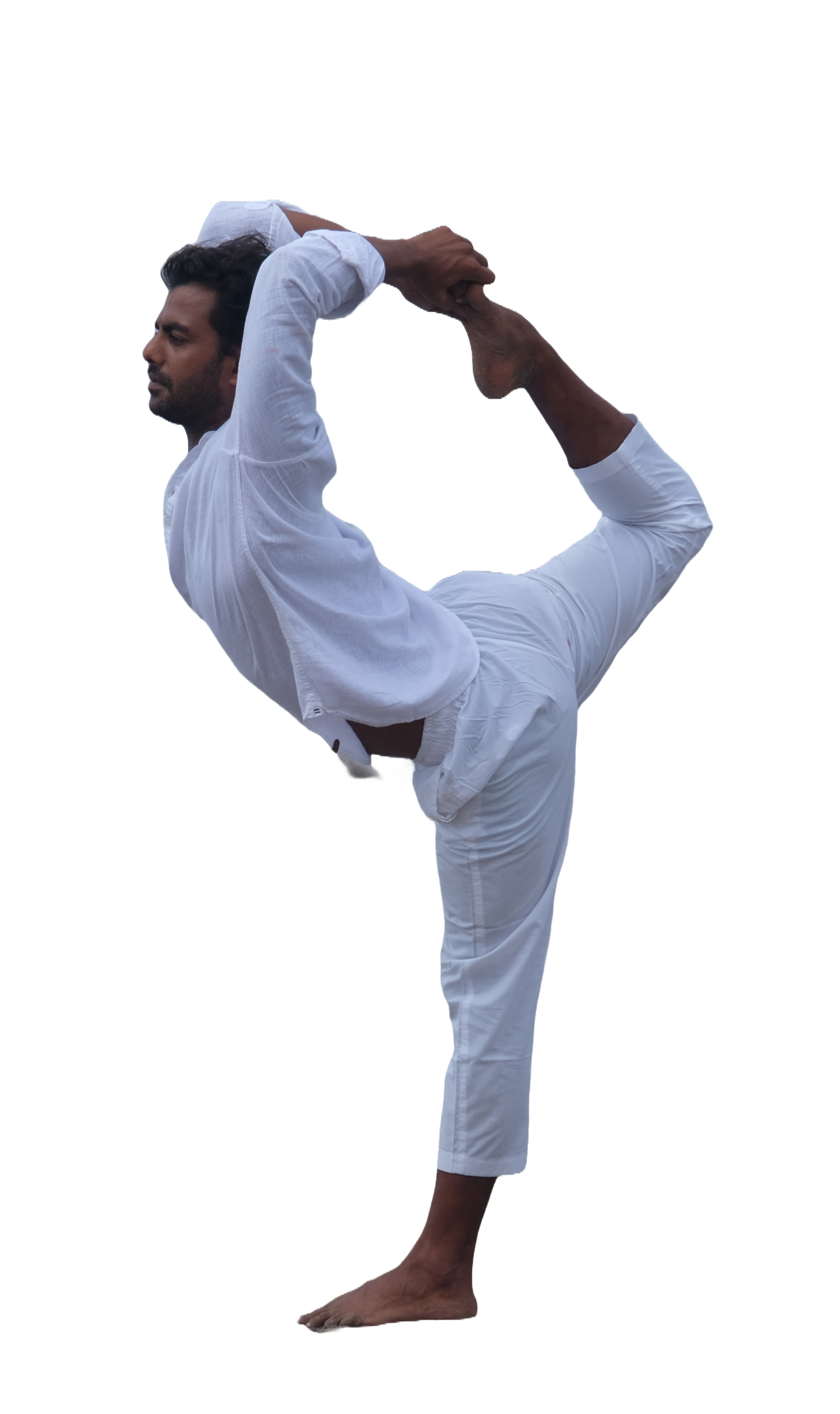Sweat it Out: Decoding the Heat – Hot Yoga vs. Bikram Yoga
Let’s step into the world of heated yoga as we discuss the differences between Hot Yoga and Bikram Yoga. Beyond the shared heat, these practices diverge in ways that influence your experience on the mat. Whether you’re new to these styles or a experienced practitioner, join us to uncover the unique elements that set Hot Yoga and Bikram Yoga apart, guiding you through their individual characteristics and helping you choose the style that resonates with you.
Bikram Yoga
Bikram Yoga, also known as Hot Yoga, is a style of yoga developed by Bikram Choudhury in the 1970s. It consists of a specific sequence of 26 postures (asanas) and two breathing exercises, which are practiced in a heated room typically set at a temperature of 105 degrees Fahrenheit (40 degrees Celsius) with high humidity.
The practice of Bikram Yoga is characterized by its emphasis on the therapeutic benefits of heat and the predictable sequence of postures. The heat is believed to warm up the muscles, increase flexibility, promote detoxification through sweating, and enhance circulation. The sequence of postures is designed to systematically work and stretch the entire body, including muscles, ligaments, tendons, and internal organs.
A typical Bikram Yoga class lasts for 90 minutes and follows a specific structure. The class begins with a standing series, consisting of various standing poses that focus on balance, strength, and flexibility. This is followed by a floor series, which includes seated and lying-down poses that target the spine, hips, and core. Each posture is held for a specific duration, typically around 30 seconds to one minute, with short rest periods between each pose.

Bikram Yoga classes are conducted in a mirrored room to facilitate self-awareness and correct alignment. The practice emphasizes proper form and alignment, with the teacher providing verbal instructions and demonstrations to guide the students. Props are generally not used in Bikram Yoga, as the focus is on using one’s own body to achieve the postures.
Bikram Yoga classes are known for their challenging and intense nature due to the combination of heat, humidity, and the physical demands of the postures. The practice aims to build strength, increase flexibility, improve balance, and promote mental focus and discipline. It is often seen as a physically demanding and sweat-inducing practice.
Proponents of Bikram Yoga believe that the heat and specific sequence of postures can provide a range of benefits. These include increased flexibility, improved muscle tone and strength, enhanced cardiovascular health, detoxification, stress reduction, and a sense of mental clarity and well-being.
Important Note: It is important to note that Bikram Yoga has faced controversies in recent years due to allegations against its founder, Bikram Choudhury, and concerns about the safety of practicing in extreme heat. As a result, some studios and practitioners have chosen to distance themselves from the Bikram brand and have adapted the practice under different names such as Hot Yoga or Heated Yoga, while maintaining the heated room and a similar sequence of postures.
If you are interested in trying Bikram Yoga or any heated yoga practice, it is recommended to consult with a qualified Yoga instructor and ensure that the practice is conducted in a safe and supportive environment. It is also essential to listen to your body, stay hydrated, and modify or skip poses if necessary to avoid overexertion or injury.
Hot Yoga
Hot Yoga is a style of yoga that is practiced in a heated room, typically ranging from 95 to 105 degrees Fahrenheit (35 to 40 degrees Celsius) with high humidity. While Hot Yoga is often used interchangeably with Bikram Yoga, the term “Hot Yoga” can also refer to other styles of yoga practiced in a heated environment, not necessarily following the specific sequence of Bikram Yoga.
Hot Yoga classes may vary in terms of the specific sequence of postures, duration, and intensity, depending on the style and the instructor. Some Hot Yoga classes follow a similar sequence to Bikram Yoga, consisting of 26 poses and two breathing exercises. Others may incorporate a variety of yoga poses and sequences, combining elements from different other yoga styles.
The postures practiced in Hot Yoga classes typically include a mix of standing, seated, and balancing poses. The sequences may vary, but they often focus on building strength, improving flexibility, and enhancing overall body awareness. The heat intensifies the physical challenge, as it requires more effort to maintain stability and perform the poses in a heated environment.

Hot Yoga classes can provide a cardiovascular workout, improve muscular strength and endurance, enhance flexibility, and promote stress relief. The heat and humidity can help warm up the body, increase blood flow, and facilitate the release of toxins through sweating. Many practitioners also find that the heat promotes a sense of relaxation and helps to quiet the mind.
It is important to approach Hot Yoga with caution and be mindful of your body’s limitations and needs. The heat can make the practice more demanding and increase the risk of dehydration and overheating. It is crucial to stay well-hydrated before, during, and after the class and to listen to your body’s signals. If you have any health concerns or medical conditions, it is advisable to consult with a healthcare professional before participating in Hot Yoga or any intense physical activity.
Hot Yoga classes are typically led by experienced instructors who guide the students through the practice, providing modifications and adjustments as needed. It is essential to find a studio with trained instructors who prioritize safety, maintain proper ventilation in the heated room, and create a supportive environment for practitioners of all levels.
Remember, while Hot Yoga can be physically challenging, it is also an opportunity to connect with your breath, cultivate mindfulness, and experience the benefits of yoga in a unique and heated setting.
Similarities and differences at a glance
Understanding these distinctions can help you choose the practice that aligns best with your preferences and goals.
Similarities between Hot Yoga & Bikram Yoga
Heat
Both practices are performed in a heated environment, typically around 95-105 degrees Fahrenheit, which aims to increase flexibility and detoxification.
Differences between Hot Yoga & Bikram Yoga
Sequence and Duration
Bikram Yoga: Follows a specific sequence of 26 postures and 2 breathing exercises, practiced over 90 minutes.
Hot Yoga:The term encompasses various yoga styles (like Vinyasa, power yoga, etc.) practiced in heated rooms, without a set sequence or duration.
Humidity
Bikram Yoga: Usually has a controlled humidity level (around 40%).
Hot Yoga: May or may not control humidity, varying across different studios or practices.
Founder and Trademark
Bikram Yoga: Founded by Bikram Choudhury, who trademarked the sequence used in his classes.
Hot Yoga: The term is more of an umbrella for any yoga practiced in a heated room and isn’t associated with a specific founder or sequence.
Atmosphere and Environment
Bikram Yoga: Tends to maintain a consistent environment and sequence across all Bikram classes worldwide.
Hot Yoga: Offers more variability and flexibility in terms of the sequence and style, depending on the studio or instructor.
Intensity and Focus:
Bikram Yoga: Emphasizes consistency and holding each posture for a specific duration, focusing on alignment and strength.
Hot Yoga: Can vary widely in intensity based on the specific style practiced, such as Vinyasa, power yoga, etc.
Yoga Teacher Training & Certification in Germany with Anandam Yoga School
Explore the transformative journey of becoming a certified yoga teacher in the serene landscapes of Germany. Anandam Yoga School offers comprehensive and immersive teacher training programs. Our yoga teacher training, conducted in English, provide a rich learning environment combining traditional wisdom with contemporary teaching methodologies.
Join our esteemed program in Germany to gain an in-depth understanding of yoga philosophy, anatomy, teaching methodology, and more. Anandam Yoga School’s training equips you with the knowledge and confidence to lead impactful yoga sessions, fostering a profound connection between mind, body, and spirit.


